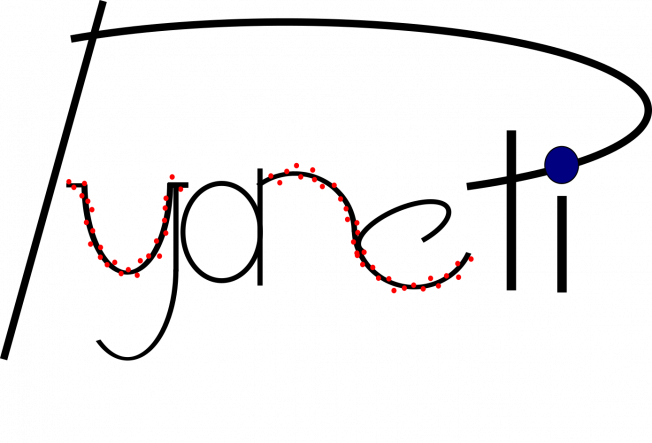Revisiting K2-233 spectroscopic time-series with multidimensional Gaussian Processes
ArXiv 2304.06406 (2023)
The young HD 73583 (TOI-560) planetary system: Two 10-M$_\oplus$ mini-Neptunes transiting a 500-Myr-old, bright, and active K dwarf
ArXiv 2110.13069 (2021)
Radial velocity confirmation of K2-100b: a young, highly irradiated, and low-density transiting hot Neptune
MONTHLY NOTICES OF THE ROYAL ASTRONOMICAL SOCIETY Oxford University Press (OUP) 490:1 (2019) 698-708
Abstract:
© 2019 The Author(s) Published by Oxford University Press on behalf of the Royal Astronomical Society We present a detailed analysis of HARPS-N radial velocity observations of K2-100, a young and active star in the Praesepe cluster, which hosts a transiting planet with a period of 1.7 d. We model the activity-induced radial velocity variations of the host star with a multidimensional Gaussian Process framework and detect a planetary signal of 10.6 ± 3.0 m s−1, which matches the transit ephemeris, and translates to a planet mass of 21.8 ± 6.2 M. We perform a suite of validation tests to confirm that our detected signal is genuine. This is the first mass measurement for a transiting planet in a young open cluster. The relatively low density of the planet, 2.04+−006661 g cm−3, implies that K2-100b retains a significant volatile envelope. We estimate that the planet is losing its atmosphere at a rate of 1011–1012 g s−1 due to the high level of radiation it receives from its host star.PYANETI II: a multi-dimensional Gaussian process approach to analysing spectroscopic time-series
Monthly Notices of the Royal Astronomical Society Oxford University Press 509:1 (2021) 866-883
Abstract:
The two most successful methods for exoplanet detection rely on the detection of planetary signals in photometric and radial velocity time-series. This depends on numerical techniques that exploit the synergy between data and theory to estimate planetary, orbital, and/or stellar parameters. In this work we present a new version of the exoplanet modelling code pyaneti. This new release has a special emphasis on the modelling of stellar signals in radial velocity time-series. The code has a built-in multi-dimensional Gaussian process approach to modelling radial velocity and activity indicator time-series with different underlying covariance functions. This new version of the code also allows multi-band and single transit modelling; it runs on Python 3, and features overall improvements in performance. We describe the new implementation and provide tests to validate the new routines that have direct application to exoplanet detection and characterisation. We have made the code public and freely available at https://github.com/oscaribv/pyaneti. We also present the codes citlalicue and citlalatonac that allow one to create synthetic photometric and spectroscopic time-series, respectively, with planetary and stellar-like signals.K2-141 b A 5-M⊕ super-Earth transiting a K7V star every 6.7 h
ASTRONOMY & ASTROPHYSICS 612 (2018) ARTN A95



